How to Turn ON or OFF Startup Sound in Windows 10?
The Startup sound as the name indicates is the sound of the device whenever it is turned ON. The Windows operating systems have different Startup sound for each version. In the Windows 10, the Startup sound is disabled by default. The Startup sound system was mostly used back in the past when the starting of the operating system took 2-5 minutes. However, now the devices are pretty fast and the Windows start pretty quickly. There are still some users who would like to enable this on their system to remember the old times or for other reasons. In this article, we will show you methods through which you can turn ON or turn OFF the Startup sound on Windows 10.
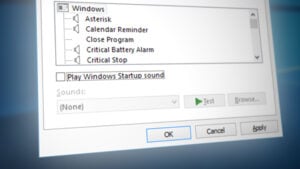
The Group Policy Editor in the below methods is only available for the Windows 10 Pro, Educational, and Enterprise editions. If you are one of the Windows Home users, then we have also included the Registry Editor method for you.
Method 1: Using the Sounds Settings Section
The option for the Windows Startup sound is still listed in the Sound Control window. It provides a check box option for the users through which they can enable or disable the startup sound. However, the changing of the startup sound will be greyed out and can be enabled by another method. Follow the below steps to turn ON or turn OFF the Startup sound in windows 10:
- Press the Windows and I keys on your keyboard to open the Settings app window. Now click on the System option.
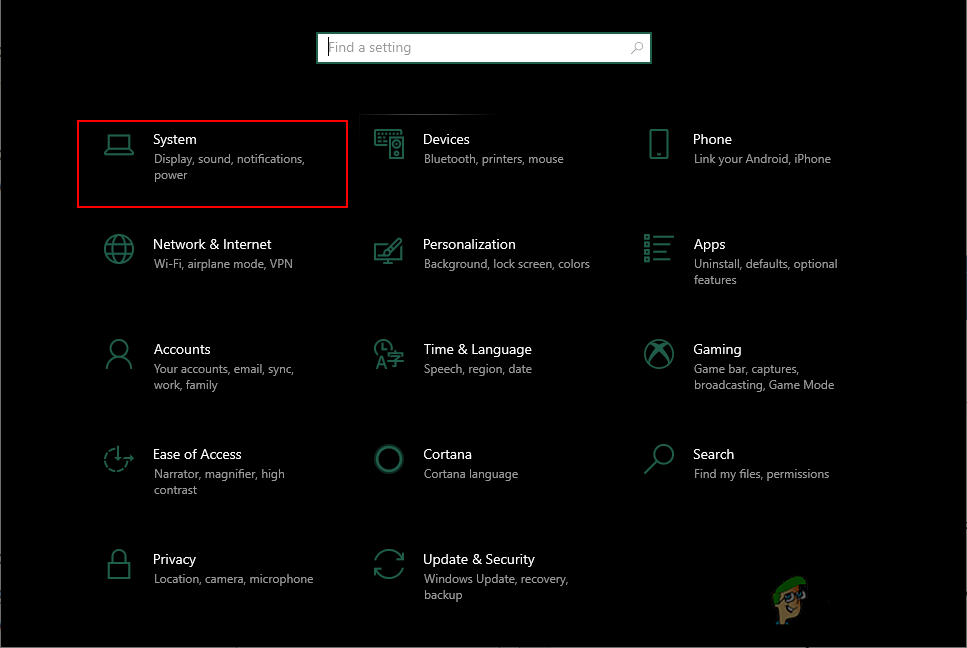
Opening the Settings app - Select the Sound section in the left pane and then scroll down. Click on the Sound Control Panel under the Related Settings.
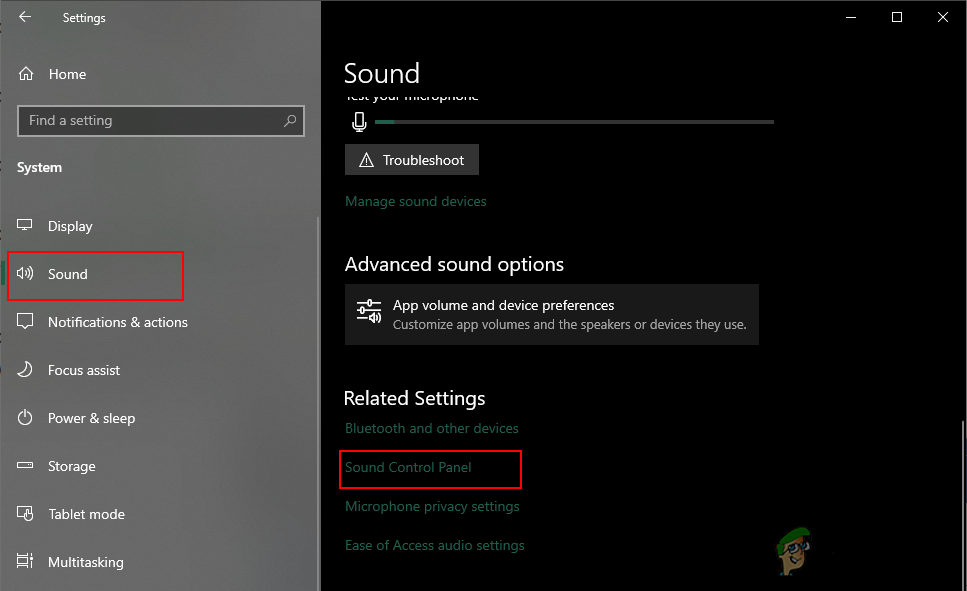
Opening the Sound Control Panel - Now select the Sounds tab and then check the “Play Windows Startup sound” option as shown in the screenshot. Click on the Apply and then the Ok button to apply these changes.
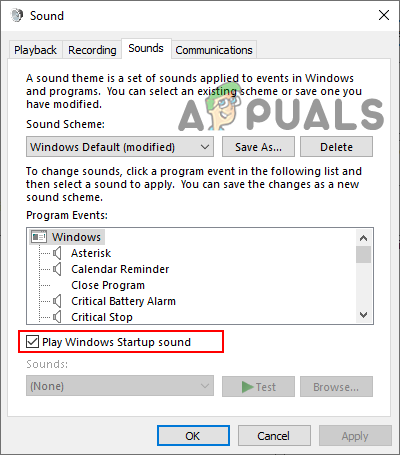
Enabling the Startup Sound - Now the Startup sound will be played on your system. You can always disable it back by unchecking the “Play Windows Startup sound” option.
Method 2: Using the Local Group Policy Editor
The Group Policy Editor method will also turn ON and turn OFF the Startup sound. However, this method will also grey out the option that we used in the first method. It will stop standard users from changing the option in the first method. The description of the policy says, it is not available in this version of Windows, however, it still works for some reason. We have included the force update step, but if it automatically updates the changes for you, then skip that step.
- Press the Windows + R key together on your keyboard to open a Run dialog. Now, you need to type “gpedit.msc” and press the Enter key or click on the Ok button. This will open up the Local Group Policy Editor window on your system.
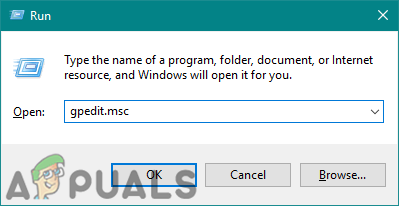
Opening the Group Policy Editor - In the Local Group Policy Editor window, go to the following path:
Computer Configuration\ Administrative Templates\ System\ Logon\
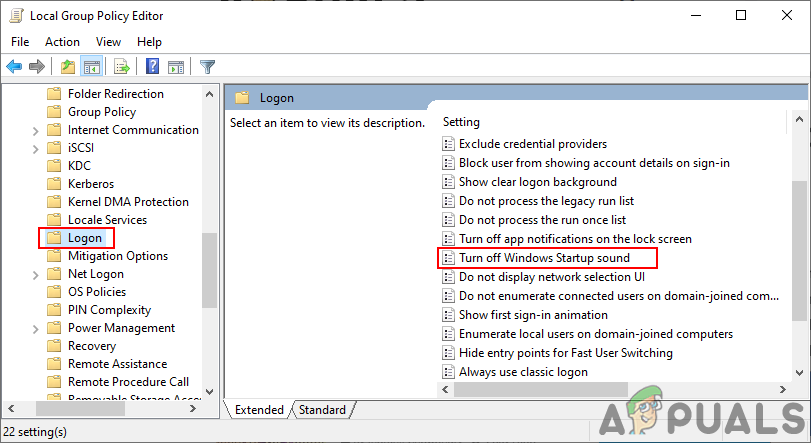
Navigating to the setting - Now double-click on the policy named “Turn off Windows Startup sound” and it will open another window. Then choose the Disabled toggle option to turn ON the startup sound.
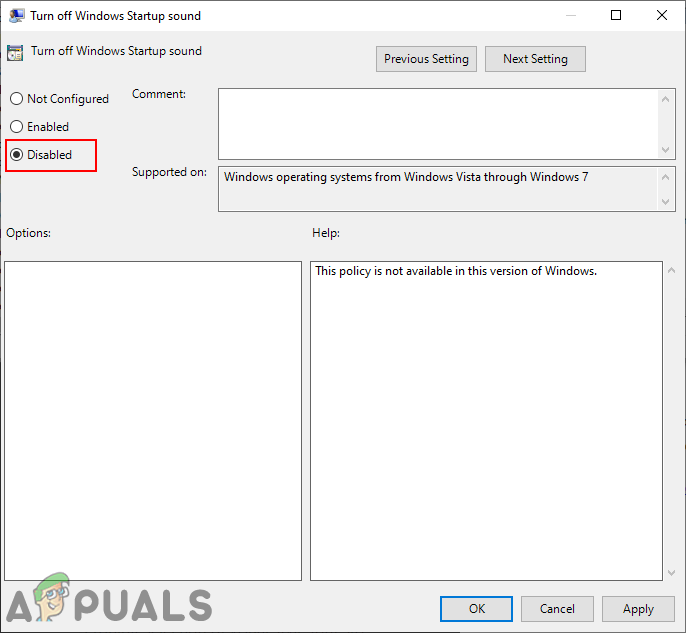
Configuring the setting Note: The Enabled option will disable the startup sound and grey out the check box.
- After that, click on the Apply and Ok buttons to save these changes.
- Most of the time the Group Policy will automatically update the new changes. If not, then you need to force the update for the group policy.
- Search for Command Prompt in the Windows search feature and run it as an administrator. Now type the following command in Command Prompt (Admin) and press the Enter key. Another way to do this is by simply restarting the system.
gpupdate /force
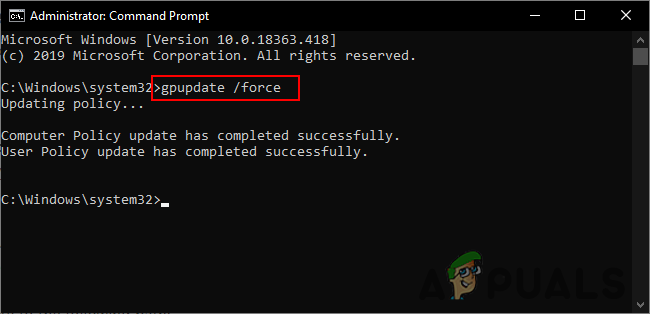
Updating group policy - You can always revert back to the default settings by changing the toggle option to Not Configured in step 3.
Method 3: Using the Registry Editor
The Registry Editor is another method that is alternative to the Group Policy Editor method. This will do a similar job to turn ON and OFF the Startup sound and grey out the option. If you already used the Group Policy Editor method, then your Registry will be updated too. However, if you are directly using this method, then you need to create the specific value in the Registry to configure the Startup sound. Follow the below steps carefully to turn ON or turn OFF the Startup sound on Windows 10:
- First, open the Run dialog box by pressing the Windows and R keys together on your keyboard. Then, you need to type “regedit” in the box and press the Enter key to open the Registry Editor. If prompted by the UAC (User Account Control) prompt, then click on the Yes button.
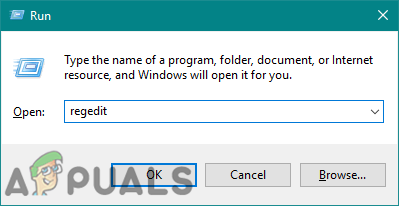
Opening the Registry Editor window - To create a Registry backup before making new changes, click on the File menu and choose the Export option. Select the path and name the file as you want. Finally, click on the Save button to create a Registry backup.
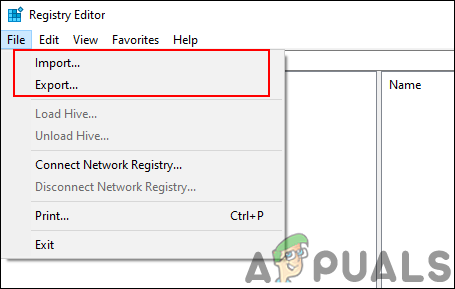
Creating a registry backup Note: You can always recover a backup by clicking on the File > Import option and then choosing the backup file that you recently created.
- In the Registry Editor window, navigate to the following location:
HKEY_CURRENT_USER\Software\Microsoft\Windows\CurrentVersion\Policies\System
- Right-click on the right pane of the System key and choose the New > DWORD (32-bit) Value option. Then rename the value as “DisableStartupSound” and save it.
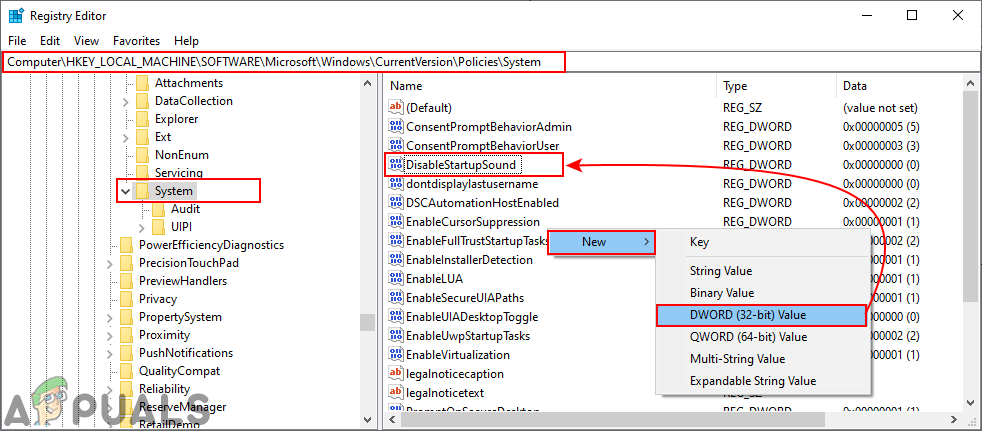
Creating a new value - Double-click on the DisableStartupSound value and it will open a small dialog. Now change the value data to 0, it will disable the value and turn ON the startup sound.
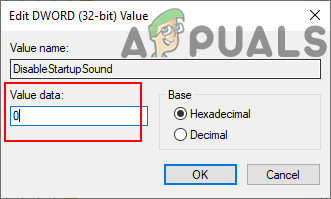
Changing the value data Note: You can force disable (grey out and disable) startup sound by setting the value data to 1.
- Finally, close the Registry Editor window, and restart the system to apply these new changes.
- You can always revert the setting back to default as they were, by simply removing the DisableStartupSound value from the Registry Editor.





